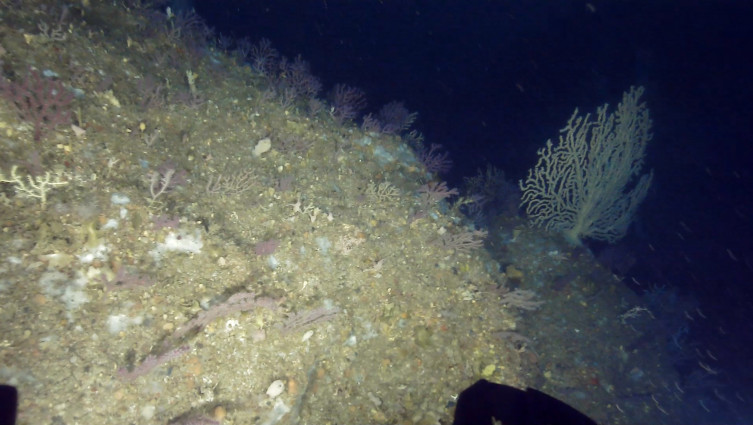Discovering the secrets of the waters off Cascais, Mafra and Sintra
From 1 to 12 October, our researchers Frederico Oliveira, Luis Bentes, Pedro Monteiro, Nuno Henriques and Jorge Gonçalves were on board the vessel Santa Maria Manuela on the Scientific Expedition Oceano Azul Cascais | Mafra | Sintra to discover the marine habitats of this region.
For 12 days, the researchers went to discover this region's secrets and natural heritage to establish the best strategy to protect and manage this area. CCMAR was responsible for mapping the marine habitats between 20 and 100 metres deep, where the researchers used an underwater robot (ROV).
Through the ROV, they detected habitats of conservation priority and discovered coral and sponge gardens, kelp forests and sabelary reefs - habitats with international conservation status. Our researcher and team coordinator, Jorge Gonçalves, added that "these habitats are essential for a large number of marine species including several with commercial interest such as the lookdown fish, red porgy, octopus and spider crab, that need protection."
The data collected has been transferred to the offices and laboratories, where the images are now being processed and analysed. The results will be shared in a scientific paper that will contribute to the preliminary diagnosis of the ecological status and value of the natural heritage of this region.
Our researchers highlight the complexity of the ROV operation due to the challenging sea conditions and the existence of fishing gear, some lost on the seabed. "The highlight was certainly the Camões Mountain, an underwater elevation, about 12 nautical miles off Cabo da Roca, where the kelp forests and gorgonian and golden coral gardens were observed".
The Scientific Expedition Oceano Azul Cascais | Mafra | Sintra was funded and coordinated by the Oceano Azul Foundation and had the support of the Municipality of Cascais, Mafra and Sintra. The expedition involved more than 45 researchers from CCMAR, MARE, Ispa - Instituto Universitário, Politécnico de Leiria, Faculty of Sciences of the University of Lisbon, University of Évora, University of Madeira, CESAM - Centre for Environmental and Marine Studies, Portuguese Society for the Study of Birds, IPMA e Hydrographic Institute.





